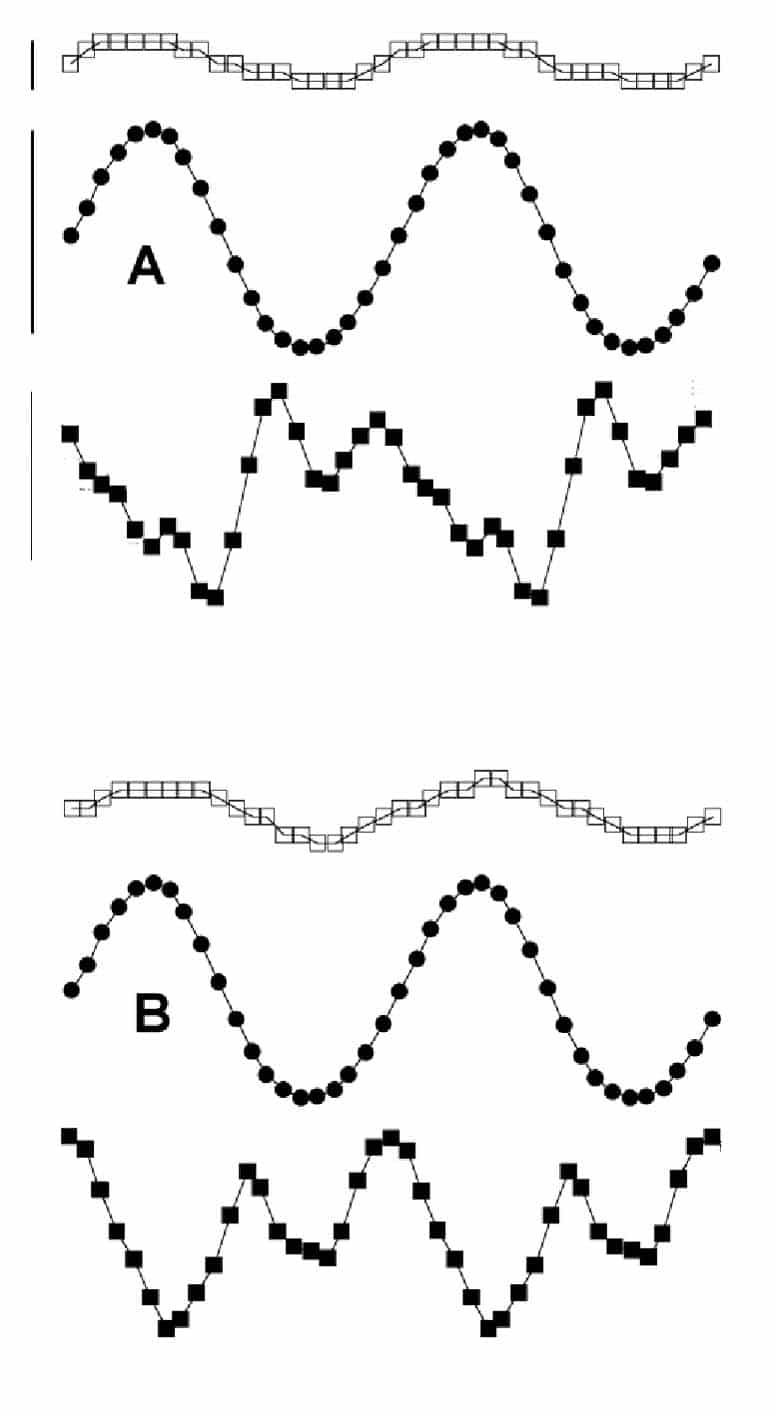In skeletal muscle cells, a synchronised myosin S1 power stroke causes a change in intensity (IM3) of the meridional X-ray reflection at 14.5 nm, which is thought to indicate both elastic and active changes in the myosin lever arm tilt. During sinusoidal length oscillations (0.1-1 kHz), IM3 signals are approximately sinusoidal and in phase opposition to fibre length, but are distorted during shortening by the passage of IM3 through an intensity maximum (IM3 max), forming a secondary IM3 minimum at the point of maximum shortening. The extent of shortening (Δy) required to reach IM3 max has been shown to depend upon the force per cross-bridge (PS1), when isometric tetanic tension is varied by temperature change (Griffiths et al. 2002). However, since temperature effects on relaxed IM3 (i.e. unrelated to the power stroke) have been reported (Lowy et al. 1991), we have now examined the effect of Ringer’s tonicity on Δy, which is an alternative method of varying PS1.
Intact fibre bundles from tibialis anterior muscles of Rana temporaria (sacrificed by decapitation) were mounted horizontally between a moving coil motor and a capacitance force transducer. Synchrotron radiation (source Elettra, Trieste, Italy; wavelength 0.15 nm, dimensions 0.3 X 3.0 mm) was admitted to the experimental chamber by a fast shutter mechanism at the plateau of an isometric tetanic contraction, while sinusoidal length oscillations were imposed simultaneously at 1 kHz. IM3 was monitored by a 1D delay line detector at 2.6 m from the preparation, with a sampling time resolution of 50 µs (Fig. 1). Bundles were exposed to 0.8 or 1.4 fold standard Ringer’s tonicity by variation of [NaCl]. Hypertonicity reduced PS1 by 17 % and increased Δy by 0.15 nm (12 °C); hypotonicity increased PS1 by 12 % and reduced Δy by 0.24 nm (2 °C). These findings are consistent with a PS1 dependence of S1 lever arm tilt, but indicate a less steep dependency under hypertonic conditions than that observed by temperature variation.
This work was supported by the E.U. Human Potential Programme.

